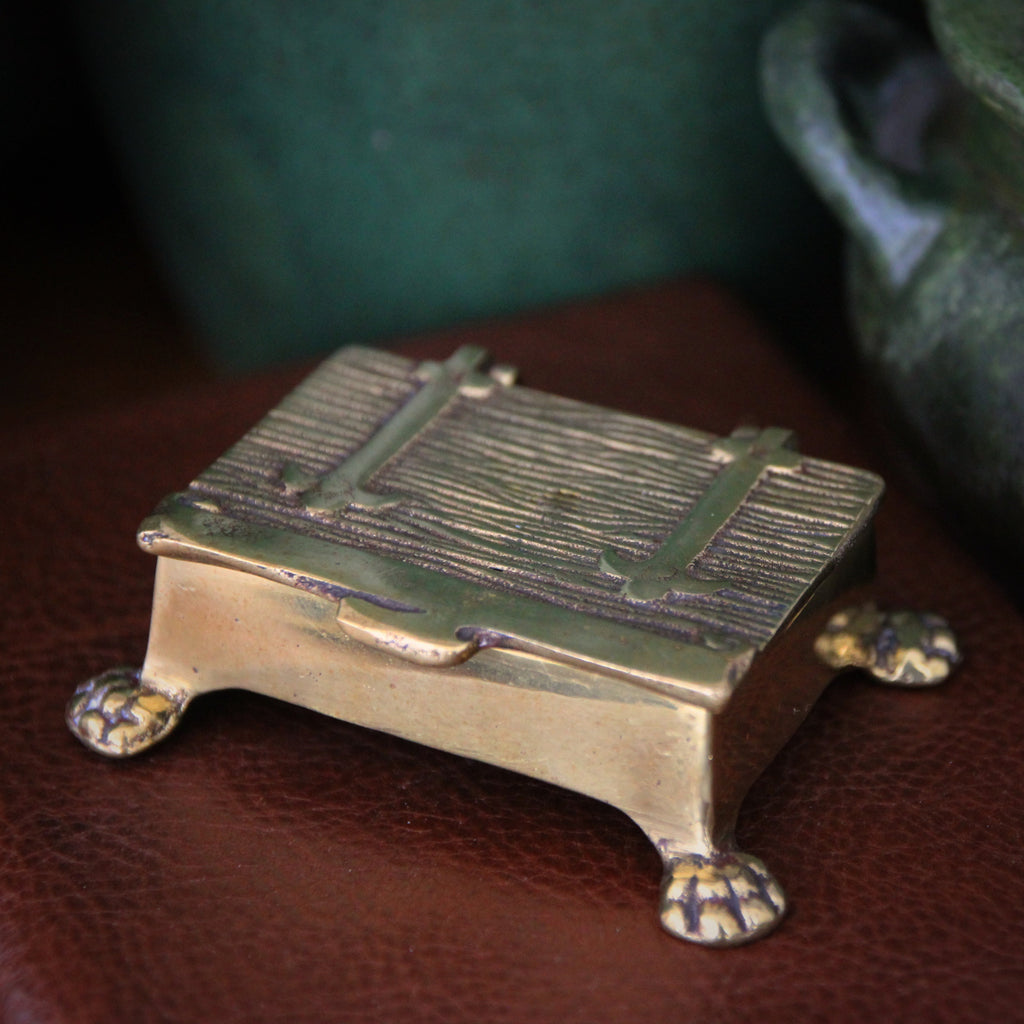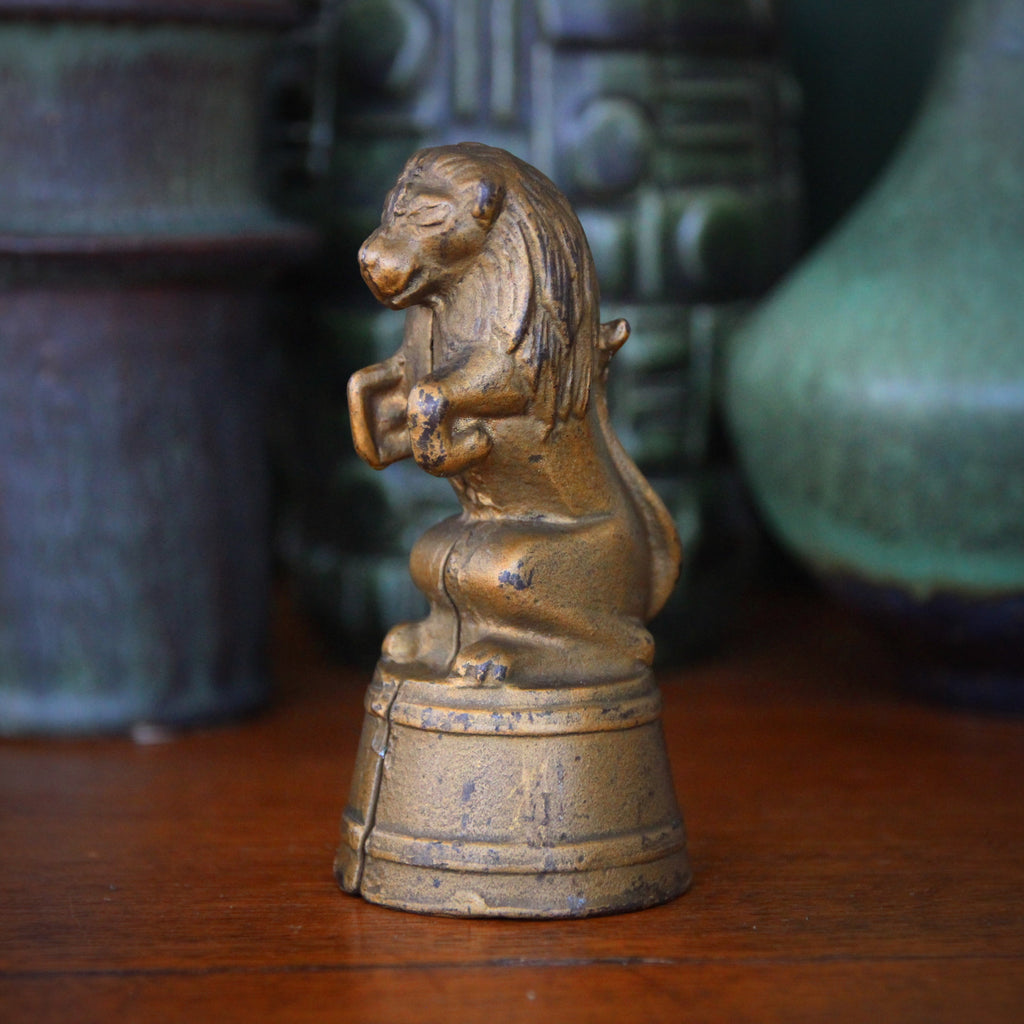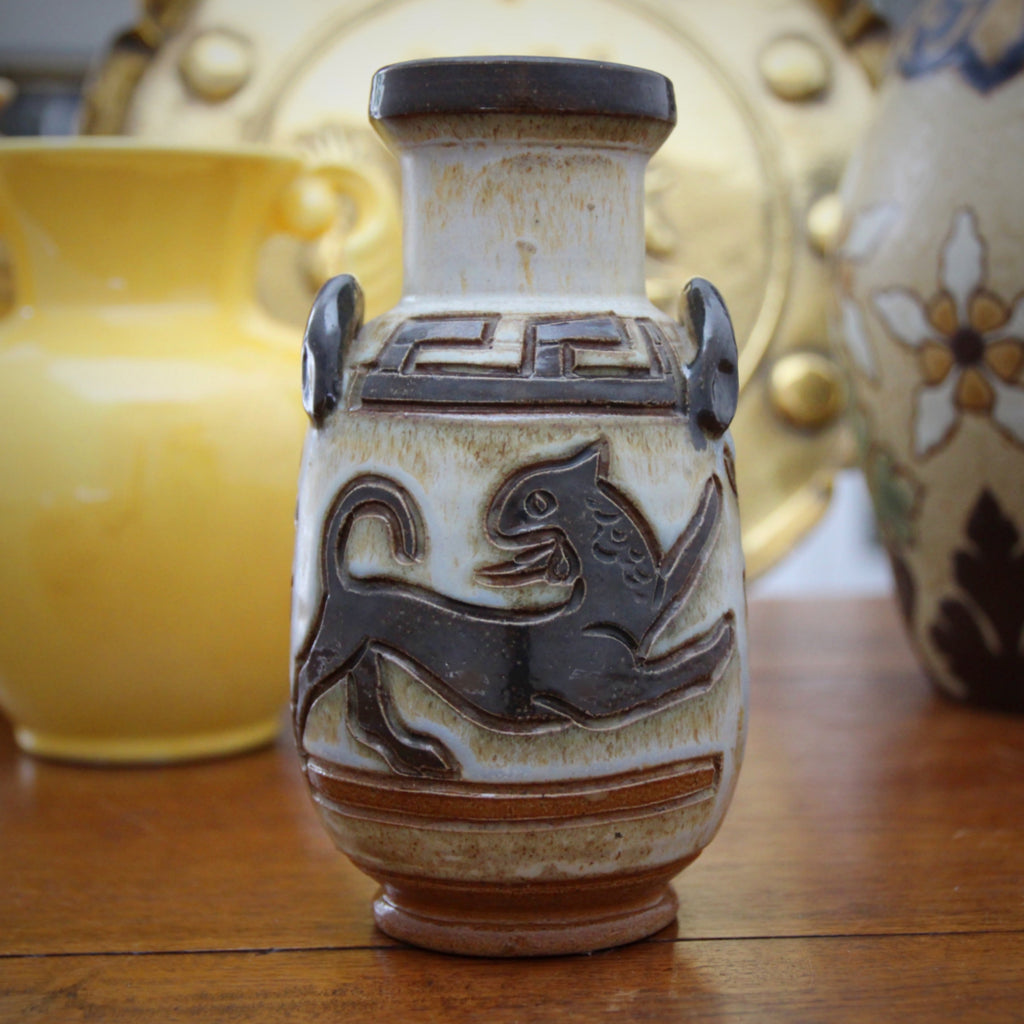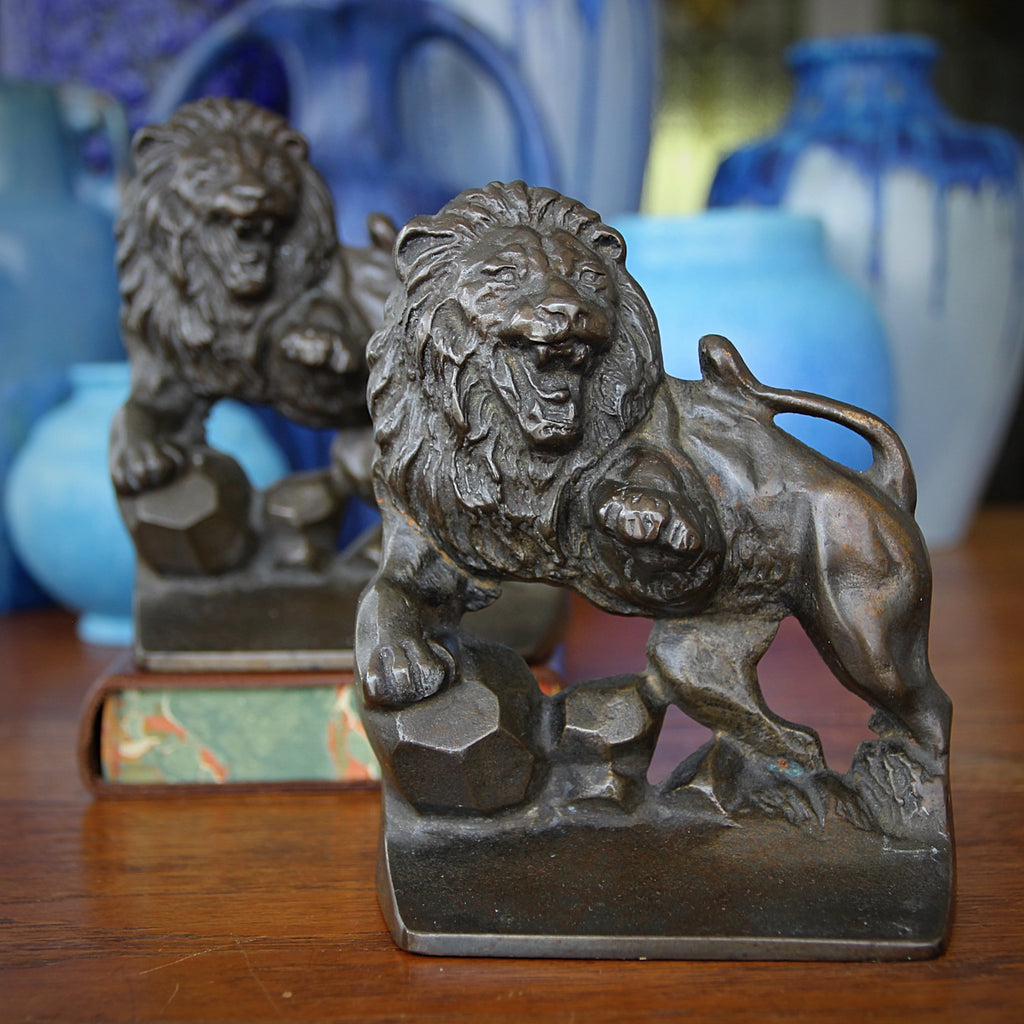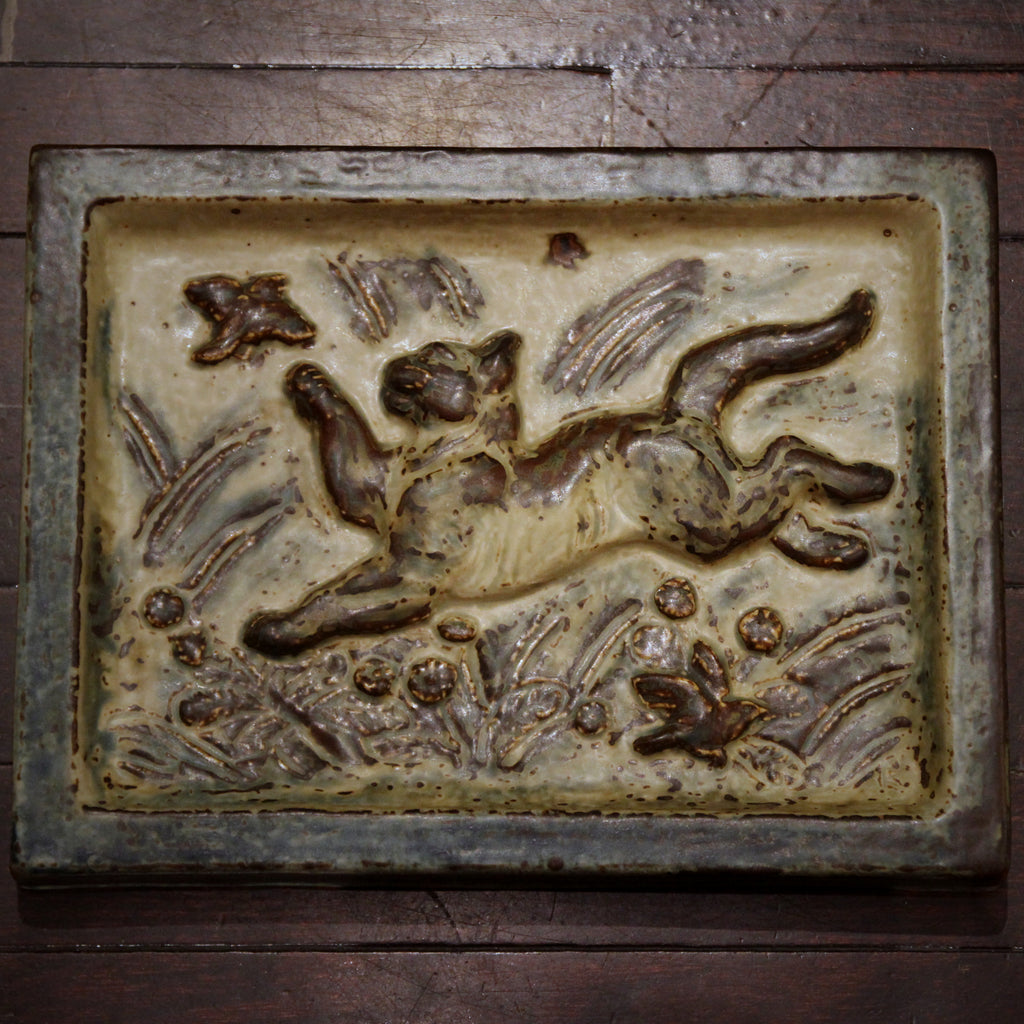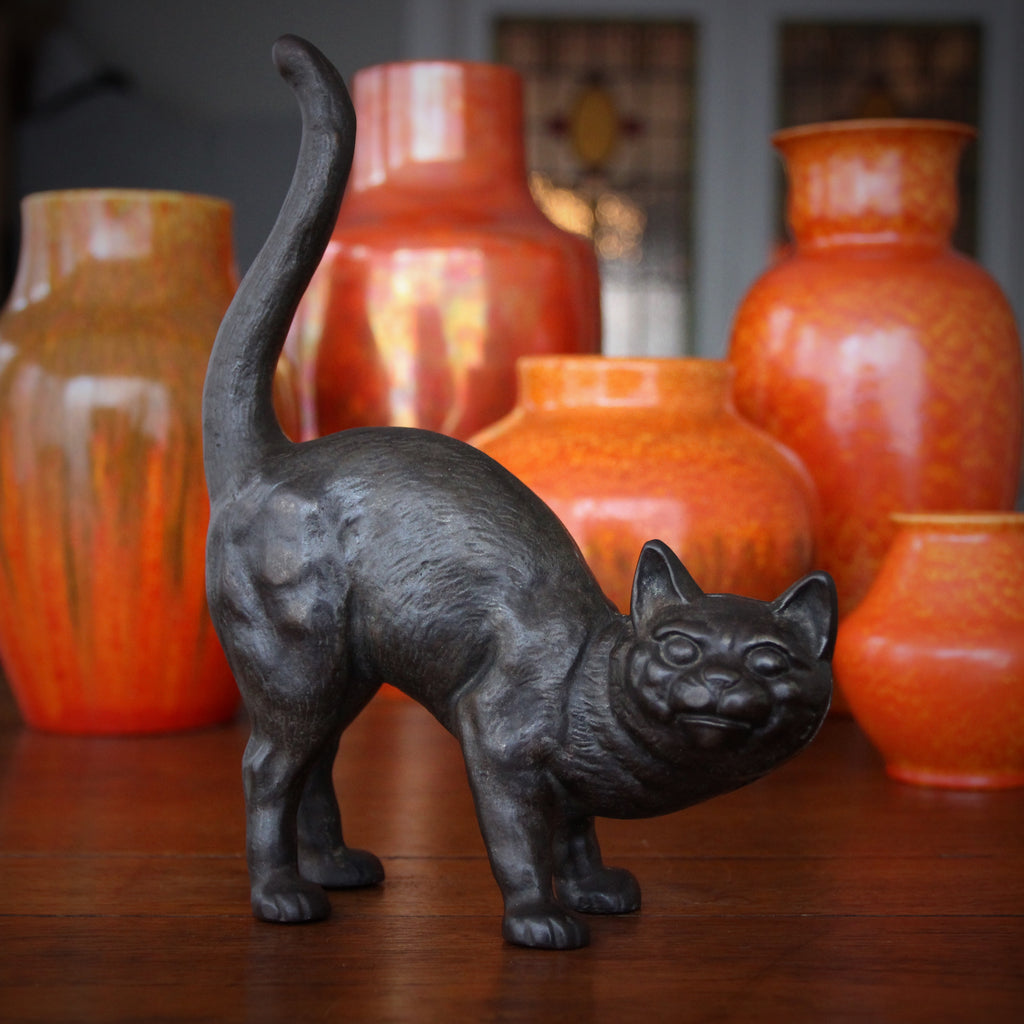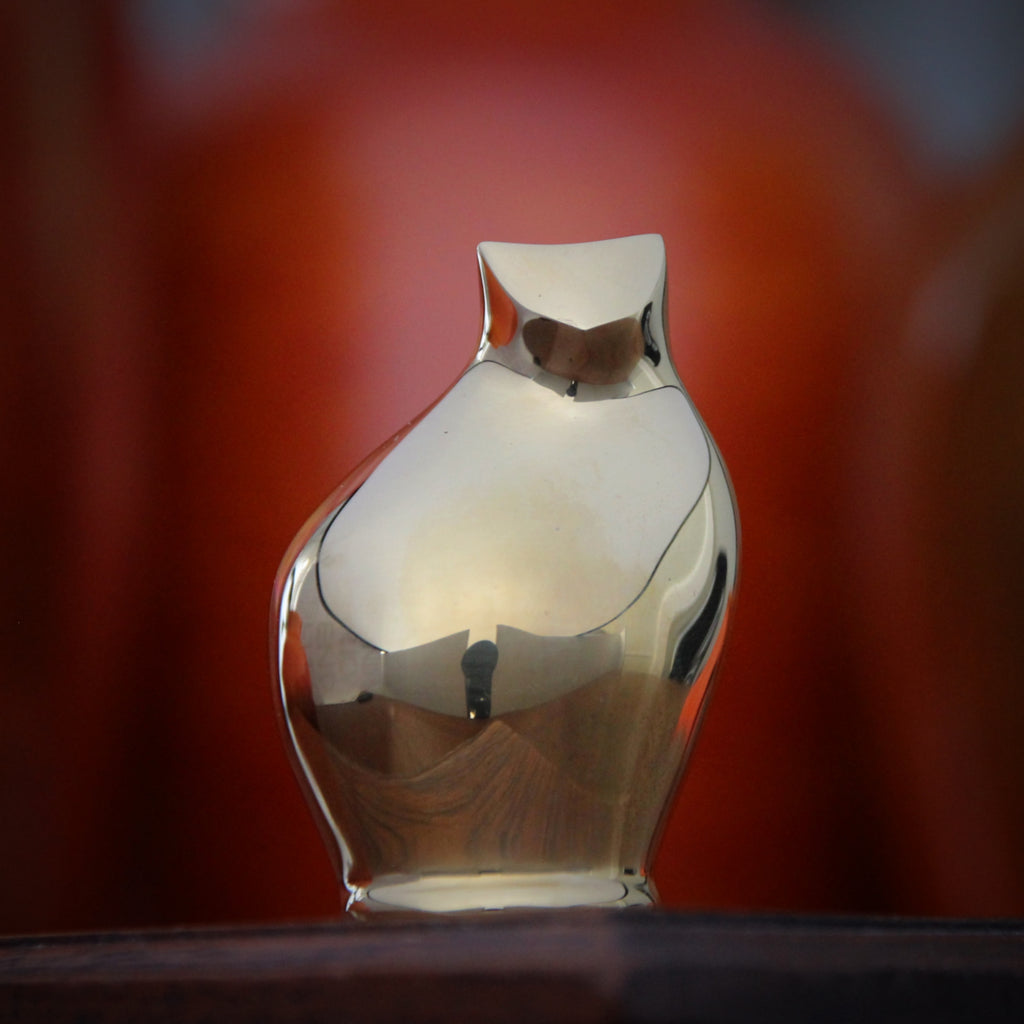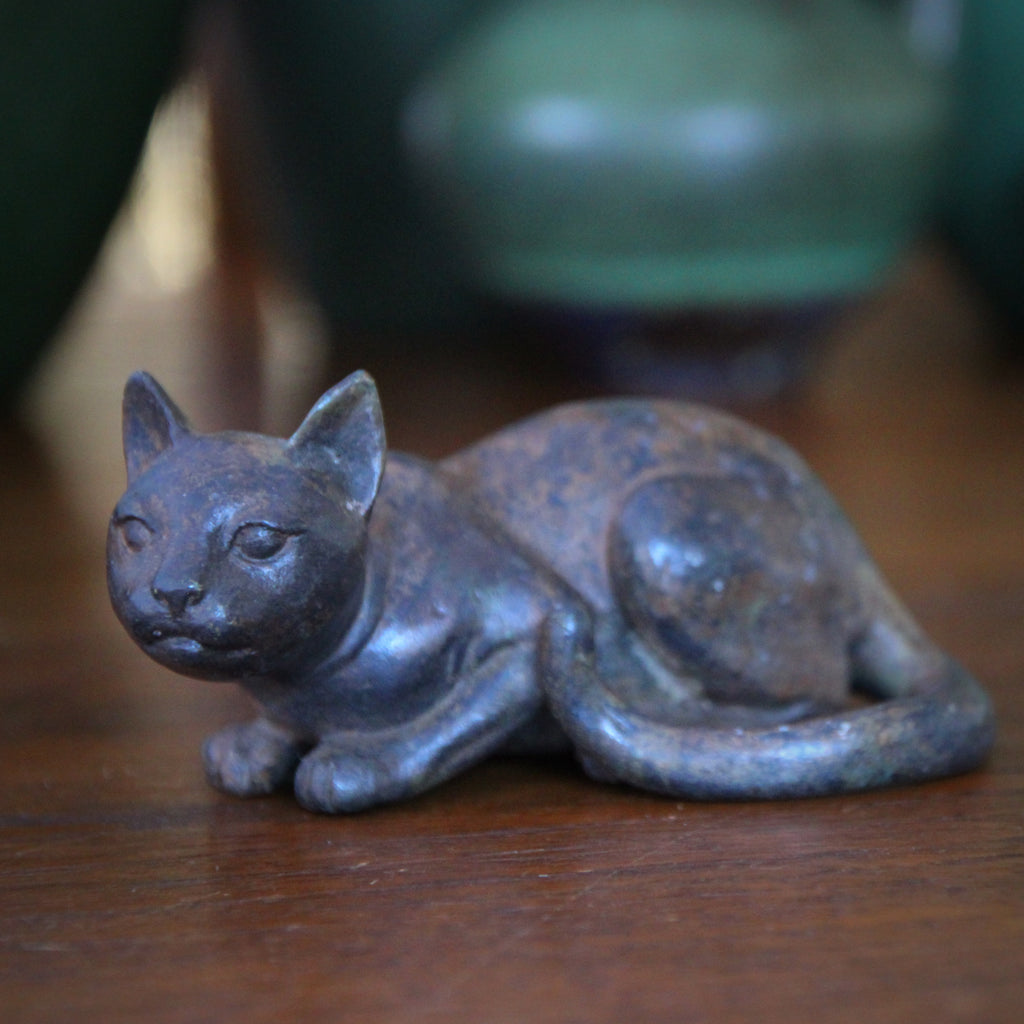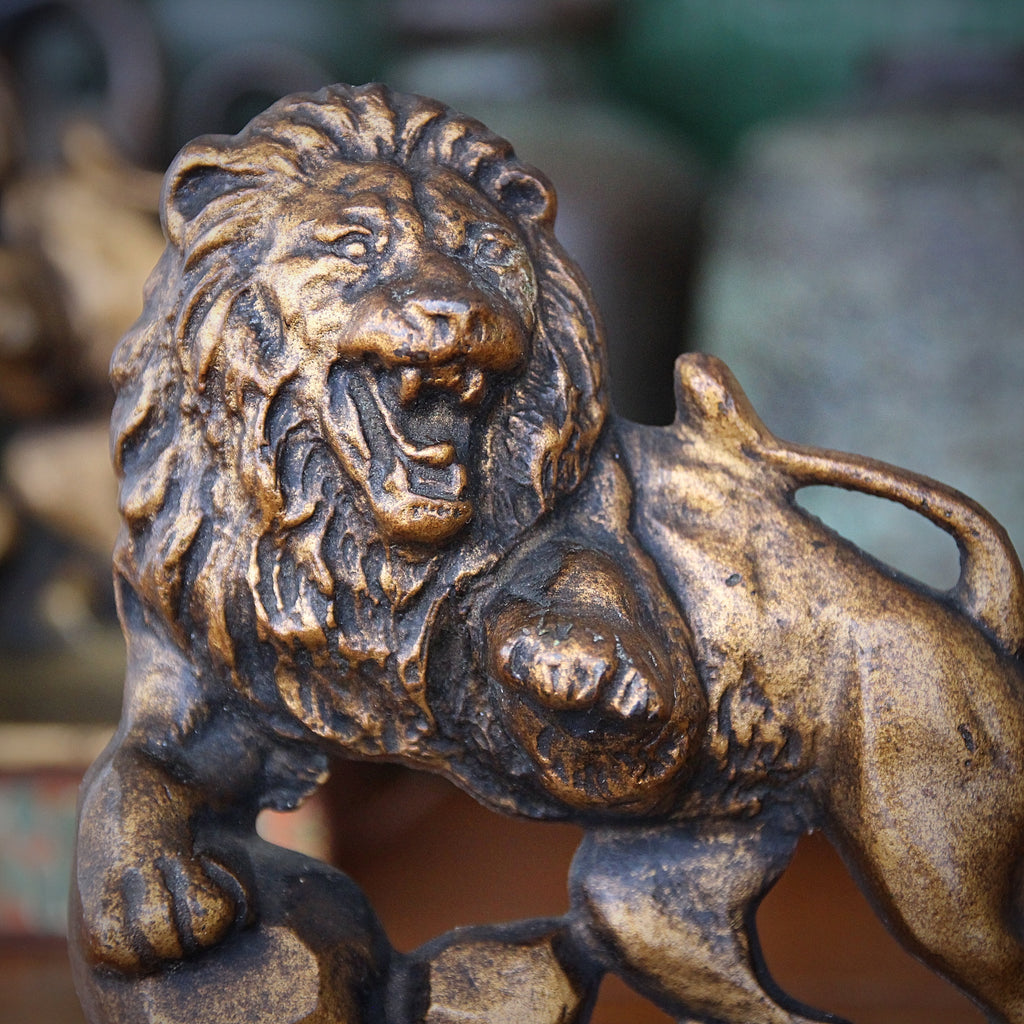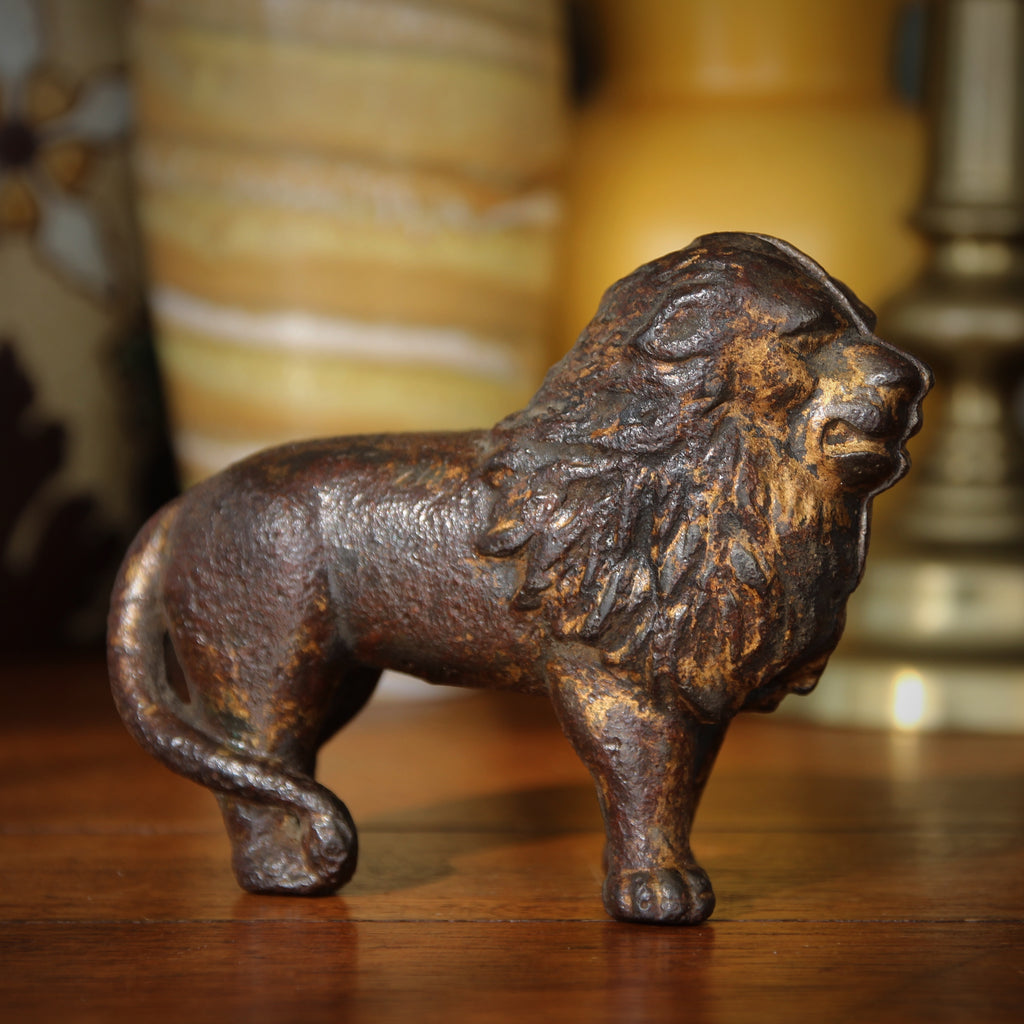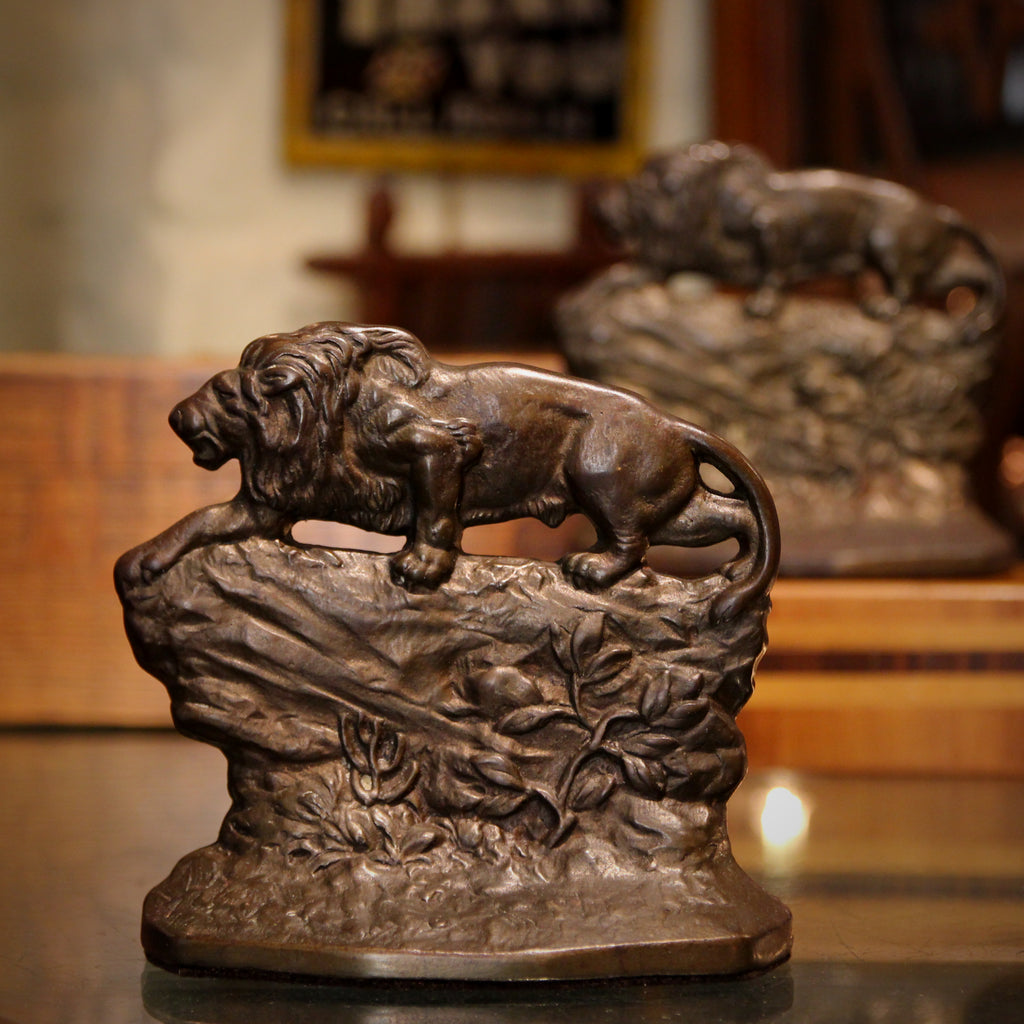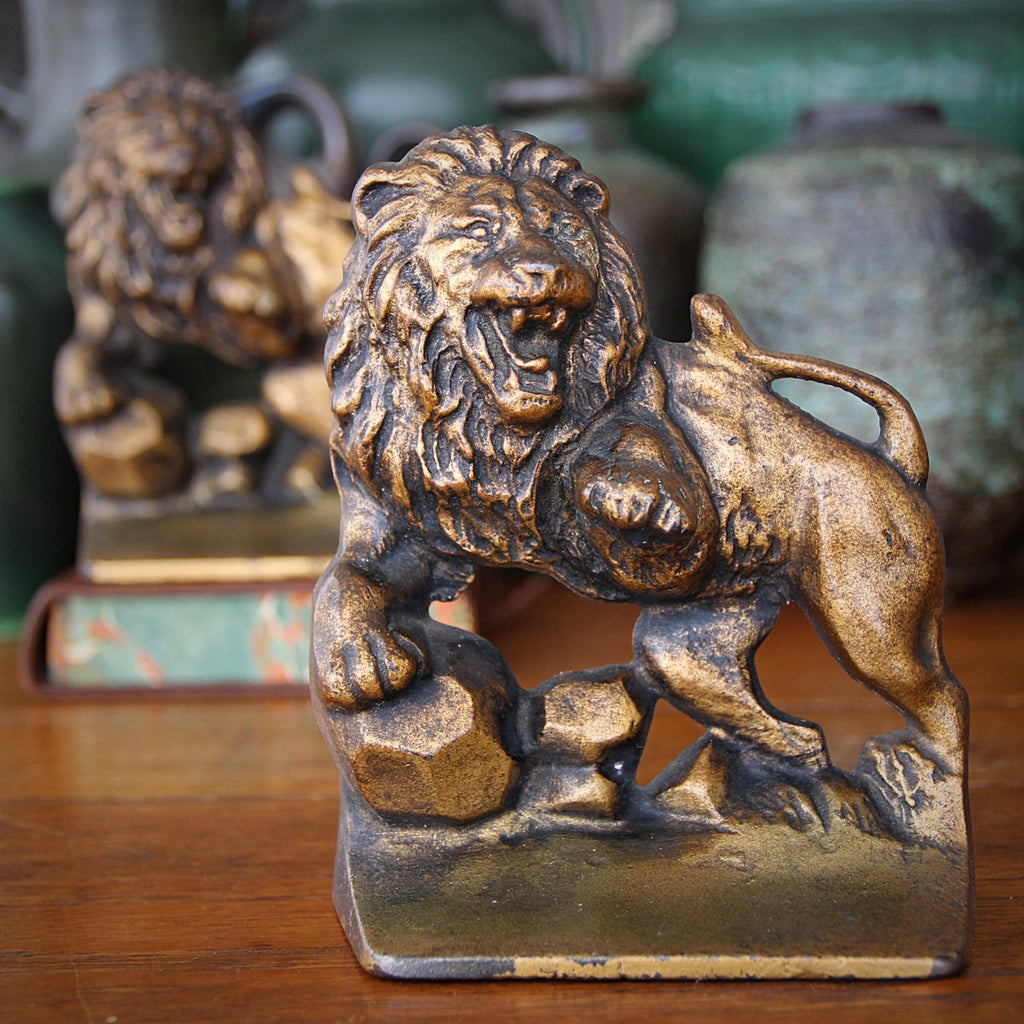JOURNAL — LEO RSS
We've always loved ceramics at LEO Design—in every form: vessels, plaques, sculpture or architectural elements. Today we'll share a handful of interesting ceramics pieces from around the world—all in the collection of the Metropolitan Museum of Art. Shown above, an Eighteenth Century porcelain lion. He was made around the year 1732 by Johann Gottlieb Kirchner in Meissen, Germany (about 15 miles from Dresden and 60 miles from the Czech border). This lion was part of a series of large porcelain beasts created for the Japanisches Palais in Dresden. The palace was built in 1715 and expanded shortly thereafter to house the Japanese porcelain collection of King Augustus the Strong. (Collecting Asian ceramics was the rage amongst European aristocrats in the...
International Chocolate Day
Today is International Chocolate Day (not to be confused with World Chocolate Day, 7 July). It is also the birthday of chocolatier and philanthropist, Milton Snavely Hershey—born on this day in 1857. Hershey was born into a Mennonite family in Derry Township, Pennsylvania, and grew-up speaking Pennsylvania Dutch. He left school after the fourth grade and began working (including apprenticeships under several confectioners). His first two (short-lived) businesses were in Philadelphia and New York. But, having learned how to make caramels, Hershey returned to Lancaster, Pennsylvania in 1883 where he founded the Lancaster Caramel Company. The company was a grand success. By the Turn-of-the-Century, Hershey was employing 1300 workers. In 1900, he sold the company for $1 million, allowing him...
Antonio Canova and His Lion
Let's say farewell to August with this handsome and impressive lion, modeled after The Vigilant Lion sculpted by Antonio Canova in the late Eighteenth Century. Antonio Canova (1757-1822) grew-up with marble dust in his veins. He was sculpting as a very young boy. He was born in Possagno, Italy (outside of Venice), and lost his father (who was a stonecutter) when he was four years old. He was taken-in by his grandfather, a stonemason and owner of a quarry. Canova's grandfather sculpted marble altars in the Late Baroque style. By the age of nine, young Canova was modeling clay and carving marble. At 12, Canova began a two year apprenticeship under Giuseppe Bernardi. He then worked under Giovanni Ferrari before...
Welcome, LEO!
Today is the first day of LEO. It is also my birthday! On this day, thirty years ago, I remember (very clearly) spending half the day on my hands and knees, belt-sanding the edges of the wooden floors at 413 Bleecker Street, my first shop in Greenwich Village. I remember that I only worked 8 hours that day. Since it was my birthday, I took it (a little) easy on myself. Most days—seven days a week—were quite long and truly exhausting. I was working alone (I could afford little help) and I really wanted to open-up the shop before the season of LEO had come to an end. I didn't hit that early goal; I opened on Tuesday 29 August,...
Countdown to LEO - 1
This handsome—and slightly startled— LEO seems to be saying, "Are you talking to me?" The sculptor created a bronze sculpture with character and personality—not the standard, stalwart lion. Nevertheless, this LEO remains regal, despite his quizzical mien.
Countdown to LEO - 2
Lions have always been a popular theme in art, literature and the decorative arts—throughout history and in all places. I suppose it's the lions' nobility as well as their bravery, skill and beauty.
In the decorative arts, when a whole lion is not required, sometimes his paws alone might make an appearance. Carved wooden lion's paws are popular in furniture. Cast iron paws might be used in "street furniture" (light fixtures, gates or fences). And sculpted bronze paws are found on everything from lamp bases to andirons.
Shown here, a little Edwardian English cast brass stamp box. Its lid is fashioned like a strap-hinged trunk and the box stands upon four lion's paw feet.
Countdown to LEO - 3
Most lions featured in art and culture focus on the males—regal specimens with lithe, muscled bodies and glorious manes. Yet, 75% (or more) of adult lions in the wild are female! Certainly, we should give the lady lions a little more attention. Especially since the lionesses do most of the hunting and raising of the young. But, regrettably, this gender imbalance amongst lions highlights the tragic fate most of their males face: a gauntlet of life-or-death challenges under the constant spectre of Darwin's "Survival of the Fittest." These "Leonine Social Dynamics" illustrate a grim picture of the raw, unforgiving "Law of the Jungle." Lions are organized within tight, durable family groups called prides. There is one dominant male, a few...
Countdown to LEO - 4
From the point-of-view of the lion, the story of Young Hercules and the Lion is rather chilling. But it is a classic and bears repeating. In Greek mythology, the Young Hercules—before he became the superhero we know today—was assigned Twelve Labors by his uncle, King Eurystheus of Tiryns. Hercules was being challenged as penance for having killed his family after the goddess, Hera, drove Hercules mad. (She was trying to get back at Hercules's father, Zeus.) The Labors were intended to be impossible for the Young Hercules to accomplish. Hercules's First Labor was to kill the Nemean Lion. Nemea was a village about 20 miles southwest of Corinth. The fearsome Nemean Lion was invincible due to its beautiful golden fur,...
Countdown to LEO - 5
We're a few days away from LEO—which begins 23 July—when the Sun moves into that celestial lion's Territory-in-the-Sky. For the next few days, we will count-down the days 'til LEO with a selection of our favorite leonine items—currently in-stock at LEO Design.
Shown here, a cast iron "circus lion" bank from the early Twentieth Century, wearing his original gold paint. Cast iron banks (and mechanical toys and door stops) were very popular at the Turn-of-the-Century—and several Northeastern factories expanded to mass produce them.
This bank is made of two separate pieces, held-together with a screw. I have not tried to unscrew the two halves, not wanting to strip the screw or "break-the-bank."
Gregory Seymour Allen, Sculptor
In less than a month's time, the Sun will be passing through LEO. I suppose I could wait to present these bookends, but I'd rather share these beauties now! These bookends were modeled by American sculptor Gregory Seymour Allen (1884-1934). He was born in Orange, New Jersey, and worked in New York City before moving west to Glendale, California. He is known, primarily, as a sculptor of "historical" themes—usually famous personages—in politics, history or the military. He designed plaques, medallions, medals, and the occasional pair of handsome bookends (or other desktop accessories). Allen often sculpted in the bas relief style, including this pair of regal lions. Allen was also a talented Impressionist painter, mostly having painted California landscapes. These handsome...
Waterloo!
Never underestimate the eagerness of the English to remind the French of their biggest battlefield loss to the English (or vice-versa). In this case, The Battle of Waterloo (18 June 1815) remains the permanent reminder of England's military dominance. That battle also marked the end of the Emperor Napoleon and the Napoleonic Wars (1803-1815).
The brass lion sculpture, shown here, was made in England in 1915—a commemorative item at the time of the battle's centenary.
Waterloo, in 1815, was part of the Kingdom of Netherlands. (Today it is part of Belgium.) Two allied armies—one led by England's Duke of Wellington, the other led by Prussia's Field Marshal Blücher—confronted the French under Napoleon Bonaparte.
LEO - XIV
Today's the Fourteenth day of sharing some of our favorite LEOs—commemorating the new pope, LEO XIV. We end this parade of lions with this simple, yet bold, bronze lion, made in Canada. In the world of heraldry, this LEO would be called a "Lion Statant Guardant Sinister." What this means is that the lion is standing (four feet planted on the ground), head turned (toward the viewer), and facing to the left (instead of facing "dexter," that is to the right, which is conventional). Note that "left" and "right" are oriented from the point-of-view of the soldier holding the shield (upon which such a lion is applied). Thus "left" and "right" are backwards from the viewer's point-of-view. Such "attitudes" are...
LEO - XIII
Cats of any sort—wild cats, house cats—will always be wild-at-heart. Deep within, all cats are hunters. Sighting, stalking, pouncing and (yes) killing are a part of any cat's repertoire. Perhaps it is this fierce, prehistoric impulse which has made lions an inspiration in the arts, literature and other human aspirations.
Shown above, a mountain lion, stalking atop a craggy rock. These cast iron bookends are deftly-sculpted, patinated with a (now well-aged) golden bronze patina and hand-painted with small details. The modeling—especially of the cat—seems to have a rough, "Rodinesque" sensibility, typical of the tastes of the Twenties. The sculptor has captured the desperate energy of a hungry lion.
LEO - XII
The lions portrayed on this pair of cast iron bookends are modeled after Antoine-Louis Barye's 1840 sculpture called "Walking Lion" (which we shared in this journal a few days ago). The bookends were made in the Twenties by Bradley & Hubbard of Meriden, Connecticut. After the original bookend models were sculpted, the pairs were cast in molten iron and finished with a chocolate bronze finish. Bradley & Hubbard was known for its well-finished metal castings. While never at the elite level of a Tiffany or Gorham, Bradley & Hubbard was, nonetheless, very well-respected, making beautifully designed and finished metal objects for America's Middle and Upper-Middle classes. One more significant observation: This pair of bookends was designed with "mirrored" lions—that is,...
LEO - XI
LEO Design is sharing some of our favorite LEOs this week, as we mark the election of the new pontiff, Pope LEO XIV.
Shown here, a Turn-of-the-Century cast iron lion bank. Years of aging has left a darkened and highly-textured surface—while traces of the original golden paint are still visible in the mane. At one time, deposited coins could be removed by unscrewing the two cast iron sides—held-together with a screw. Over the decades, the screw (and two connected halves) seem to have fused-together, making it difficult (or impossible) to open-up. But this handsome vintage lion would easily earn his keep just standing-around, looking good. And think: he was made sometime during the papacy of the last Leo, LEO XIII.
LEO - X
We started our parade of LEOs with this same sculpted design—however, finished in a darkened bronze patina. Here we have a pair in its original golden finish. Bookend foundries would customarily offer their wares in two or more finishes. Classic, chocolate bronze was probably most common. A copper patina was popular. Brass finishes were sometimes offered. And a golden finish, like we see above, was another option. Some (but not all) bookends might be offered in a hand-painted, polychromed (multi-color) finish. One hundred years of use and exposure to the interior elements add their own patina-of-time. The crevices are probably darker than they once were. Little chips of finish—or rub marks—add their own evidence of time. For this reason, I...
LEO - IX
In honor of the new pope—LEO XIV—we are sharing some of our favorite felines here at LEO Design. All currently are available right here, on the LEO Design website.
This lion, cast in spelter (sometimes called "white metal"), is "cold-painted" after casting, cooling and chasing (that is, cleaning-off any burrs or irregularities from the casting process). This King of the Jungle expresses a gentle, stately demeanor—seemingly at-peace. He pauses atop a small mound, surveying his kingdom to the horizon.
LEO - VIII
Cats—of any size—will always be wild hunters-at-heart. Such is the allure of big cats; such is the allure of house cats. Here we see a pair of nicely-modeled and crisply-cast bookends which portray our hero—a LEO stalking some quarry which only he can see. The sculptor captured beautifully the coiled energy, the silently-creeping tension, of this hunter. He crouches atop a rocky outcrop, keeping low as to not reveal his intention. Even the rocky "pedestal" is beautifully rendered and cast. The bookends still retain their original, handsome bronze finish
LEO - VII
This six-lion candy mould ticks two boxes for me—for I love LEOs and I love chocolate!
It was made in the 1910's and, judging from the weight of the metal, it was probably intended for a commercial candy maker. An exterior plating of copper lies-over the steel "tray." I picture all these little chocolate LEOs, wrapped-up in golden foil, sitting in a partitioned chocolate box. Such were the good old days—when each city or town supported its own Mom and Pop candy shop.
LEO - VI
For these two weeks, we are commemorating new Pope LEO XIV with a parade of handsome lions, now on sale at LEO Design.
On the tummy of this little bronze lion is the impressed word "Courage." Though small, this brave little lion could be your reminder to remain resolute—or it may be a wonderful admonition to someone you love.
LEO - V
Lions have enjoyed a long history in the decorative arts. This rampant lion—incised upon a Belgian Art Nouveau vase—looks like he could have come from Minoan Crete or Mycenaean Greece. It is true that ancient themes often have been "recycled" by later artists—especially after a new archaeological discovery is made, inspiring new takes on old artworks. This two-handled stoneware vase was made in Belgium by Antoine DuBois (1869-1949), probably around 1920. Initial excavations as Knosos, the remarkable palace on the island of Crete, began in 1877. Much archaeological progress was made in the earliest years of the Twentieth Century—right before this vase was conceived. Crete is considered, by many, the "cradle of Western Civilization." Crete's Minoan art and civilization (3000-1150...
LEO - IV
Parisian Antoine-Louis Barye was the greatest animalier of his time—that is, an artist who sculpts realistic animals. He was born in 1796 and got his start as an apprentice under Napoleon’s goldsmith. In 1816, he was admitted to the Ecole des Beaux Arts where he pursued sculpture—initially honing his talent with medallions and bas relief works. Barye enjoyed spending time sketching animals of the Royal Menagerie in Paris’s Jardin des Plantes—and his sketches have been favorably compared to Delacroix’s. From these sketches, the artist would craft small clay models which he would cast in bronze. Both his sketches and his cast bronzes succeeded in capturing the wild, naturalistic personalities of their subjects. Barye also produced monumental works in addition to the...
LEO - III
As a child, I had a Ringling Brothers circus poster on my bedroom wall. A fierce lion—paw raised—snarled from the colorful print. This pair of Art Deco cast iron bookends remind me of that LEO from my boyhood. These bookends were made in the Twenties or Thirties. They are beautifully (and intricately) modeled, nicely cast and finished with a (now aged) dark patina. They await employment in your office or library—or standing upon your mantel or windowsill where they will snarl silently (yet fiercely).
LEO - II
In commemoration of the new pope—LEO XIV—we will be spending the next fourteen days sharing some of our favorite, handsome LEOs, currently on-offer on this website. Shown above, a cast iron lion bank from the Turn-of-the-Century. It has a rich, dark patina, acquired over more than a century of standing guard. It makes a wonderful sculpture, though I would hesitate to use it to store my coins. I'd advise against using a screwdriver to unscrew the two halves.
LEO - I
Over the past two-and-a-half weeks, I have been captivated by the solemn grandeur on display as the Catholic Church commemorated and buried its beloved Pope Francis. The subsequent period of discernment and the election of his replacement have been equally riveting—with its timeless ritual, drama and (yes) theatre. As a practicing and devoted Roman Catholic, I was highly interested in (and engaged with) the unfolding process and its outcome. Like most Catholics, I hold personal convictions and preferences of how I'd like my Church to journey-on. (Grazie, Francesco!) I also realize that this 2,000 year old institution does not make many sudden jumps—or move very quickly. In this regard, it's good that (in most things) I usually support...
Fierce!
At LEO Design, we love our LEOs—including this handsome beast from the Twenties or Thirties. Lions are portrayed in many different manners. This guy seems to have been sculpted with an Early Twentieth Century "Circus Lion" demeanor—like one might have seen on a circus poster between the wars. His foreshortened paw reaches-out; his other paw rests upon a Cubist boulder. As we love lions, I have had this particular fellow—actually, a pair of cast iron bookends—in-stock in the past. At the moment, we also have in-stock a similar pair with their original gold finish option. This pair of bookends have an age-darkened bronze finish. The lively sculpting, the fierce energy, and the rich bronze patina make for a handsome addition to...
A Tribute to "Cat Ladies" - V
There is a fine line between a feline's sense of play and her instinct to hunt. Cats—of every size, shape and variety—are known to be stone-cold killers. For this reason, keepers of house cats are strongly encouraged to keep their charges indoors all the time (for the sake of the billions of birds killed by American cats each year). When playing with a cat—with a laser pointer, a string, a paper bag or a retractable mouse—it is clear that her skill as a huntress is tied to her sense of play. Is your cat trying to "kill" her catnip mouse? Or is she only playing with the lizard in the backyard? (And why does she so often drop her "trophy" at...
A Tribute to "Cat Ladies" - IV
This week, we're sharing some of our favorite felines—a tribute to "the cat ladies" who inspire, teach and lead us. A cat's arched back. Is it a hiss, a stretch, or an appeal for a friendly scratching? This cast iron kitty, made in the Teens or Twenties, is a doorstop by Hubley. The Hubley Manufacturing Company was founded in Lancaster, Pennsylvania, in 1894. Shortly after the Turn-of-the-Twentieth-Century, Hubley began manufacturing cast iron animals—like the doorstop shown here—and other cast iron toys: cars, trucks and "heavy equipment." As the century progressed, Hubley shifted to cast-zinc items and became most well-known for its collectible scale model cars. This heavy, cast iron cat was designed to be a doorstop. It would look great, however,...
A Tribute to "Cat Ladies" - III
Is there any greater luxury than an afternoon nap? Even if you're too busy to indulge in such a pleasure, you might enjoy watching this little kitty, curled-up, enjoying forty winks. He is made of stoneware, finished with a thick and curdled mocha-caramel glaze. He will happily serve as a little paperweight. Or be content to just lie-around, perhaps on the windowsill, making the place even homier.
A Tribute to "Cat Ladies" - II
From Japan we have this wonderful Modernist house cat. Her simple—but sensuous—lines convey much feline energy and attitude. Made of heavy cast brass, hand-chased and polished to a mirror finish. A wonderful paperweight or "whatnot" to keep you company on your desk, windowsill or bedside table.
A Tribute to "Cat Ladies" - I
With so much in the news lately about "cat ladies," we thought that LEO Design was overdue paying tribute to them. Childless? Sometimes. Miserable? Not that I can see. This week we will share some of our favorite little felines, now in-stock at LEO Design. Each of these kittens will wait patiently at home—cheerfully and loyally—until "their special ladies" return home (whether from work, from vacation or from the polls). Here's to the cat ladies!
This little fella is sculpted in brass, finished with a verdigris bronze patina. The sculptor has captured perfectly the hunched, coiled energy of a feline—confident, relaxed, but ready to pounce at a moment's notice. Not unlike some of those cat ladies I know!
The LEO in Summer - VIII
Let's end our week of LEOs in Summer with this little guy—a bronze sculpture of a small, but brave, lion. Spontaneously modeled (perhaps a touch Rodin-ish), this little boy has the letters COURAGE impressed upon his tiny tummy. It's a great sentiment for someone who is setting-out on a new journey. Or, perhaps, someone who is facing a daunting challenge. And, of course, it would be warmly-received by any LEO you know.
The LEO in Summer - VII
This week, we're presenting some of our favorite felines—The LEO in Summer—which can be found in our LEO Design on-line shop.
Here's another Turn-of-the-Century cast iron lion bank—probably first owned by a child who was being encouraged to save his coins. The two halves are separately cast, then screwed together. Whether used to hold coins or not, this handsome LEO has a richly-aged patina. He'll provide good company on a desk, bedside, or windowsill.
The LEO in Summer - VI
Antoine-Louis Bayre (1795-1875) is arguably the world's all-time greatest animalier—that is, a sculptor (or painter) of naturalistic animals. He began his studies as an apprentice jeweler, working under Napoleon's goldsmith. He was admitted into the École des Beaux-Arts, in Paris, and enjoyed spending time sketching the animals in the ménagerie at the Jardin des Plantes (the city's botanical garden which contained a small zoo—housing the animals moved from Versailles during the French Revolution).
The LEO in Summer - V
Spelter is a metalic alloy—mostly zinc, usually combined with various other metals, like tin, antimony or lead. In the Nineteenth Century, spelter became very popular as a casting alternative to bronze. When cast, it conveys fine detail very well and is lighter and less expensive than bronze. But spelter is also very brittle (subject to cracking, if dropped). All manner of decorative objects—clocks, trophies, candlesticks, bookends—were made of spelter. After casting, the pieces can be patinated, like bronze, or painted, like the lion above. Being economical (and easier to work with, due to its lower melting point), spelter was perfect for making inexpensive toys like soldiers, animals or game board parts. Our lion shown here, standing atop his mountain,...
The LEO in Summer - IV
Lions have been used in heraldry for millennia. Different poses—called attitudes—would indicate different characteristics. The turn of the head, the lifting of a paw (or paws) were given different names. A Lion Rampant is one who is rearing-up, standing on his two back feet or one back foot. A Lion Sejant is seated, front paws together on the floor (like a house cat). A Lion Couchant is lying on his belly, head raised (like a sphinx). Our cast bronze lion, shown above, was modeled in the American Midwest, thus, I'm not sure if heraldic conventions were being observed. If I were to take-a-stab at identifying his attitude, I would say Lion Statant Guardant Sinister (which means, a lion standing on four...
The LEO in Summer - III
Wednesday's LEO was stalking. Thursday's LEO was static. Today's LEO is fierce—roaring while he strikes with his left paw. The pair of cast iron bookends, shown above, portrays a ferocious lion as he might appear in a circus—or on a circus poster. Most of the original golden finish remains intact. And the "Cubist" boulder, under foot, reflects the times in which this lion was sculpted—in the Twenties. The sculptor succeeded in creating a model full of energy, action and fury. Indeed, this LEO is a monarch.
The LEO in Summer - II
Before Venmo or Apple Pay or Zelle, people saved and spent real money—cash dollars and coins. Good savings habits were encouraged in youngsters by giving them a bank into which they could deposit coins—to save-up for a special purchase or to hold-fast for a rainy day.
The cast iron lion bank, shown above, was just such an item. In it, a child could save his or her coins and have a wonderful companion in their bedroom. Traces of the original golden paint remain on the lion which was made at the Turn-of-the-Twentieth-Century.
The LEO in Summer - I
With all due apologies to Henry II, let us have a look at some of The Lions in Summer—at LEO Design. Over the next few days, we will present some of our favorite felines, currently in-stock in the LEO Design on-line shop.
Shown here, a stalking lion, crouching, creeping, preparing for the strike. Most lion bookends capture the "Majestic Lion"—a regal feline posing for the sculptor. Here we see him in-action. The sculptor has beautifully captured the tense, coiled energy of a big cat—ready to pounce. Our hunting hero is shown atop a jagged rock, perhaps a jutting cliffside or promontory. It's a nice, old-fashioned aesthetic, beautifully sculpted in the early Twentieth Century.
LEO, at Long Last!
LEO is here, monarch of the zodiac! And, of course, that lucky lion is the namesake of our little shop, LEO Design.
For the next few days, we'll be sharing some of our favorite LEOs—now on-line and available for purchase on our website.
Shown above, a nicely-cast spelter lion. The details are superb and the cold-painting (that is, done after casting) is lovely. It is not marked but I suspect it was made in Austria or Germany.
Fierce!
This fierce feline is ready! Ready to guard your precious tomes. This pair of fierce lion bookends was made of cast iron in the Twenties or Thirties and still wears most of his original golden paint. Beautiful, deep bas relief sculpting is well-aged by time—creating the perfect "high/low effect" on the patina, making the sculpture pop. Lions have been portrayed in the decorative arts for thousands of years. And they have been a significant part of European heraldry since the Middle Ages. In fact, every "attitude" (position or posture) of a heraldic lion has a specific name. A lion rampant stands upon its back legs. A lion passant is shown walking. A lion couchant is lying upright, on its belly (like...
Seven Months 'til LEO!
I need little encouragement to celebrate—to lionize—LEO. This Turn-of-the-Century cast iron "Ferocious Lion" coin bank will help remind us that LEO starts seven months from today! He is nicely-cast and wears an age-darkened, original patina.
Last Days of LEO - Part III
Let's mark the last day of LEO with this sensational, impressive piece. It is a beautifully-rendered model of the 1840 "Walking Lion" by French animalier par excellence Antoine-Louis Barye (1795-1875). Barye, who had little formal education, began his artistic career working for his father, a goldsmith and military engraver. He later was apprenticed to Napoleon's master goldsmith. After military service (1812-1814), he found work in a painting studio, followed by work with a sculptor. From 1818 to 1823, Barye studied at the esteemed École des Beaux Arts. His public debut as a sculptor occurred at the Paris Salon of 1831—after which he generated many government, religious and private commissions. When key patrons died, and commissions slowed, Barye began producing limited...
Last Days of LEO - Part II
The Minoan Civilization—centered on the Mediterranean island of Crete—is considered the first civilization in Europe, which coalesced some 5,000 years ago. Around 1450 BC, they came under the domination of the Mycenaeans (Ancient Greeks) and a hybrid culture developed. But the art and society of the Minoans (as can be seen at the Palace of Knossos) was lively, energetic and wonderful. The island boasts a small but terrific museum. The vase above, made in Art Nouveau Belgium by potter Antoine DuBois, is inspired by ancient ceramics such as those found in Crete. A Minoan or Greek-inspired lion leaps beneath a band of Greek Key fretwork. On the reverse, a Greek stylized palm leaf can be found, similar to those found...
Last Days of LEO - Part I
We're in the last three days of LEO; Virgo is waiting in the wings. Let's countdown the last days of LEO with an assortment of handsome feline gifts.
Shown above, a pair of cast iron bookends with portraits of a regal King of the Jungle. They were modeled by the talented sculptor Gregory Seymour Allen who was born in New Jersey in 1884 and died in Glendale, California in 1934. Alas, I can find little biographical information about the artist or his life. But I can see that he was a talented sculptor, judging by his work on this pair of bookends.







